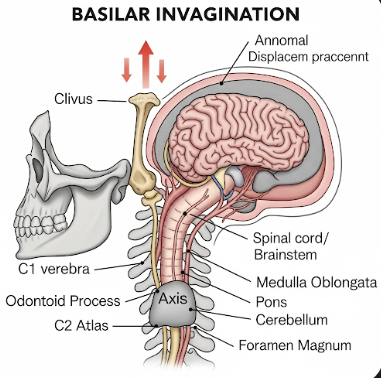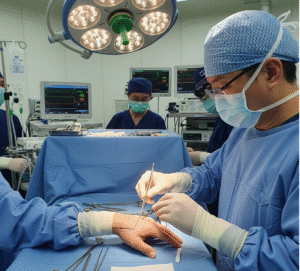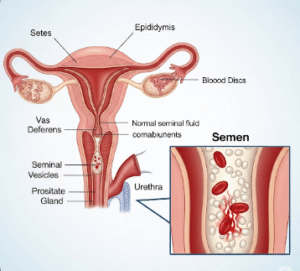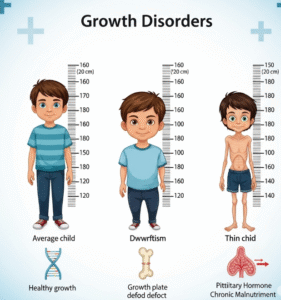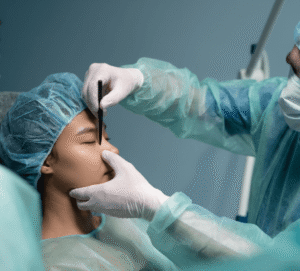Overview
Basilar Migraine, also known as basilar-type migraine (BTM), is a rare subtype of migraine characterized by neurological symptoms that originate from the brainstem and both hemispheres of the brain. Unlike typical migraines, basilar migraines often involve symptoms such as dizziness, visual disturbances, difficulty speaking, and coordination problems, which can mimic more serious conditions like stroke. Early recognition and proper management are essential to prevent complications and improve quality of life.
In Korea, neurologists and headache specialists provide advanced diagnostic and treatment options for basilar migraine. Hospitals offer comprehensive neurological evaluation, imaging studies, preventive therapy, and lifestyle counseling, ensuring patients receive individualized care tailored to symptom severity and triggers.
What is Basilar Migraine?
Basilar Migraine is a type of migraine with aura in which the aura originates from the brainstem or posterior circulation, rather than just one side of the brain. This results in bilateral neurological symptoms before or during the headache phase. The migraine can occur in both adults and adolescents, and in some cases, it may be confused with transient ischemic attacks or other cerebrovascular disorders due to overlapping symptoms.
Basilar Migraine often progresses in phases:
- Aura phase: Neurological disturbances such as vertigo, double vision, or speech difficulties.
- Headache phase: Moderate to severe headache, often throbbing, which may be bilateral.
- Postdrome phase: Fatigue, confusion, or residual neurological symptoms after the headache subsides.
Unlike other migraines, basilar migraine rarely causes permanent brain damage, but the intensity and complexity of symptoms can significantly impact daily life.
Symptoms
Symptoms of basilar migraine can be diverse and may include:
- Vertigo or dizziness: Feeling off-balance or spinning sensations
- Visual disturbances: Double vision, blurred vision, temporary loss of vision, or flashing lights
- Speech difficulties: Slurred speech (dysarthria) or temporary inability to speak (aphasia)
- Tinnitus: Ringing or buzzing in the ears
- Ataxia: Loss of coordination or difficulty walking
- Numbness or tingling: Usually affecting the face, arms, or legs
- Bilateral weakness or clumsiness in hands or limbs
- Severe headache: Often throbbing and located at the back of the head or both sides of the head
- Nausea and vomiting
- Sensitivity to light and sound (photophobia and phonophobia)
Symptoms typically last 30 minutes to several hours, with headaches sometimes persisting for up to 72 hours.
Causes
The exact cause of basilar migraine is not fully understood, but several mechanisms are believed to contribute:
- Brainstem dysfunction: Abnormal electrical activity in the brainstem may trigger aura and headache symptoms.
- Cerebral blood flow changes: Vasospasms in the basilar artery or posterior circulation can contribute to symptoms.
- Genetic predisposition: Family history of migraines increases susceptibility.
- Neurochemical imbalance: Altered levels of serotonin and other neurotransmitters may play a role.
- Trigger factors: Stress, hormonal changes, certain foods (chocolate, caffeine, processed meats), sleep disturbances, and sensory stimuli such as bright lights or loud noises.
Risk Factors
Factors that increase the likelihood of basilar migraine include:
- Female gender: More common in women, particularly during reproductive years
- Family history of migraine
- Hormonal fluctuations: Menstruation, pregnancy, or menopause
- Lifestyle factors: High stress, irregular sleep, and certain dietary habits
- Other migraine types: Individuals with a history of aura or classic migraines are more susceptible
- Cardiovascular risk factors: Hypertension, smoking, or obesity may worsen symptoms
Complications
While basilar migraines are typically not life-threatening, untreated or frequent attacks may lead to complications:
- Increased risk of stroke: Rarely, severe basilar migraine may trigger posterior circulation ischemia.
- Chronic migraine: Recurrent attacks can lead to persistent headache disorders.
- Impaired daily function: Difficulty with speech, balance, or vision can interfere with work, school, and daily activities.
- Psychological impact: Anxiety, depression, or fear of attacks due to unpredictable and debilitating symptoms.
Early diagnosis and preventive management reduce the risk of severe complications.
Prevention
Preventing basilar migraines involves avoiding triggers, maintaining healthy habits, and managing stress:
- Identify and avoid triggers: Common triggers include caffeine, alcohol, processed foods, sleep deprivation, and stress.
- Regular sleep schedule: Consistent sleep helps reduce migraine frequency.
- Balanced diet and hydration: Adequate nutrition and water intake support brain health.
- Stress management: Techniques such as meditation, yoga, and exercise.
- Limit sensory overload: Reduce exposure to bright lights or loud environments.
- Medication prophylaxis: In some cases, preventive medications may be recommended for frequent or severe attacks.
Korean headache clinics provide personalized guidance on trigger management, lifestyle adjustments, and preventive strategies.
Treatment Options in Korea
Treatment for basilar migraine in Korea is designed to relieve acute symptoms, prevent recurrence, and improve quality of life:
1. Diagnosis:
- Neurological examination: Assessment of reflexes, coordination, and sensory function
- Imaging: MRI or CT scans to rule out stroke or structural abnormalities
- Blood tests: To exclude metabolic or systemic causes of symptoms
2. Acute Treatments:
- Pain relief medications: NSAIDs or acetaminophen for mild to moderate headache
- Triptans: Effective for severe migraine attacks, used under medical supervision
- Antiemetics: To control nausea and vomiting
3. Preventive Treatments:
- Beta-blockers or calcium channel blockers: Reduce attack frequency in some patients
- Antidepressants or anticonvulsants: For patients with chronic or frequent attacks
- Lifestyle modifications: Stress reduction, dietary adjustments, and sleep regulation
4. Supportive Care:
- Physical therapy: Helps improve balance and coordination during or after attacks
- Cognitive behavioral therapy (CBT): Reduces psychological impact and improves coping strategies
- Patient education: Guidance on recognizing early warning signs and avoiding triggers
Korean hospitals and neurology clinics are equipped with comprehensive migraine management programs, combining medication, lifestyle counseling, and psychological support to ensure optimal outcomes for patients with basilar migraine.
In conclusion, Basilar Migraine is a rare migraine subtype originating from the brainstem, causing complex neurological symptoms and severe headaches. Early diagnosis, identification of triggers, preventive strategies, and advanced treatment options are essential to manage symptoms and reduce complications. Korea’s modern neurology centers offer comprehensive care, including accurate diagnosis, effective therapies, and patient-centered education, helping individuals live healthier, migraine-managed lives.

